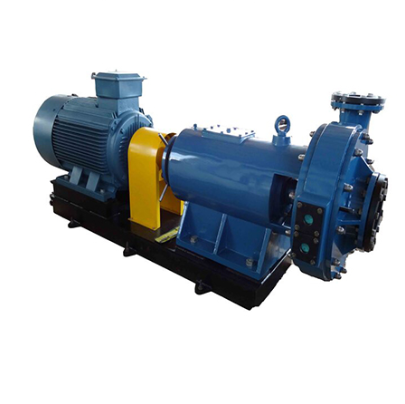Today, Chenyang will introduce some basic information about the colloid mills. The article will explain what a colloid mill is, as well as the working principle and advantages. Interested partners go and have a look.
Introduction to Colloid Mill
The colloid mill is composed of stainless steel and semi-stainless steel colloid mill. Except for the motor and some parts of colloid mill products, all parts in contact with the material are made of high-strength stainless steel, especially, since the key dynamic and static grinding discs are strengthened. Therefore, the colloid mill has good corrosion resistance and resistance. Grinding, so that the processed materials are pollution-free, hygienic and pure.

How a colloid mill works
The colloid mill is driven by the motor through the belt drive to drive the rotating teeth (or called the rotor) and the matching fixed teeth (or called the stator) to rotate at a relatively high speed. One of them rotates at a high speed, and the other is stationary. The weight or external pressure (which can be generated by the pump) is pressurized to produce a downward spiral impact force. When passing through the gap between the fixed and rotating teeth (the gap is adjustable), it is subjected to strong shear force, friction force, and high-frequency vibration, The high-speed vortex and other physical effects make the material effectively emulsified, dispersed, homogenized and pulverized by the colloid mill to achieve the effect of ultra-fine pulverization and emulsification of the material.
Advantages of colloid mill
Compared with the pressure homogenizer, the colloid mill is first of all centrifugal equipment. The advantages of the colloid mill are simple structure, convenient equipment maintenance, and it is suitable for materials with higher viscosity and larger particles. The main disadvantage of the colloid mill is also determined by its structure. First of all, due to centrifugal motion, the flow rate is not constant, and the flow rate varies greatly for materials with different viscosities.
For example, for the same equipment, when dealing with dense paint materials and thin milk fluids, the flow rate can differ by more than 10 times; secondly, due to the high-speed friction between the colloid mill rotating stator and the material, it is easy to produce large Heat denatures the material to be treated; third, the surface of the colloid mill is easy to wear, and after wear, the refining effect will be significantly reduced.
Well, the above is all the content about the colloid mill brought by Chenyang. I hope that through this article, you can have a preliminary understanding of the colloid mill. More information will be continuously updated, and we will see you in the next issue.













